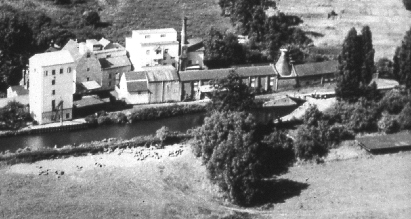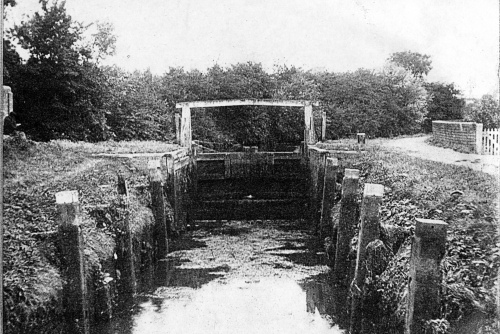
Prior to the Norman Conquest, most of the Sawbridgeworth area was owned by the Saxon "Angmar the Staller". A Staller was a royal official in Norse culture, equivalent to a constable or standard bearer, a title enjoyed by the wealthiest thegns in a king’s favour.
Angmar occupied this role at the court of Edward the Confessor, one of the last Anglo-Saxon kings.
After the Battle of Hastings (1066) it was granted to Geoffrey de Mandeville I (Constable of the Tower of London) by William the Conqueror.
The Manor of "Sabrixteworde" was recorded in the Domesday Book. Other local notables have included John Leventhorpe, an executor of both King Henry IV and King Henry Vs' wills, and Anne Boleyn, who was given the Pishiobury/Pishobury estate to the south of the town.
During the Second World War RAF Sawbridgeworth, which was sited on farmers fields two miles north-west of the town, operated Supermarine Spitfires, Westland Lysanders, North American Mustangs, and de Havilland Mosquitoes. The joinery works, located between the canal and the railway and owned by the building contractor Walter Lawrence & Son Ltd, built over 1,000 Mosquito fuselages for deHavilland during WW2. Subsequently it reverted to making joinery and doors for the building trade. The joinery works was closed in about 1982 and houses were built on the site.

Supermarine Spitfire
Surviving the war, the town has always been profitable, thanks mainly to it's 2 mills and large maltings, and always accommodated well-heeled notorieties (the in-famous 'Beckingham' palace is near-by), but it has also managed to remain fairly small in size.
The Mill

Established and first mentioned around the time of the Domesday Book (1086) as being part of the manor of "Sabrixteworde" owned by Geoffrey de Mandeville.
One of 2 mills in the town, this was a corn and cattle feed mill, the other (Sheering Mill) being a fulling-mill (which would have cleaned and beaten cloth in order to bulk it up, or 'full' it).
Sawbridgeworth continued to be a successful corn mill for many decades, and in 1869 it was expanded to include a Malting.
Again, one of two large malting houses in Sawbridgeworth (and one of many up and down the Stort), its' main industry would have been in supplying the London brewers insatiable appetite for a roasted malt used for producing strong, dark Porter ale. The Stort canal was perfect for transporting it's produce to the capital.
In 1880 the mill was rebuilt and converted to steam, and in 1891 Thomas Burton takes over, and establishes a successful empire that eventually expands to own South Mill, Bishops Stortford by 1937.
Eventually the mill loses traction to larger outfits not imbedded within growing towns and abroad, and closes for good in 1970. Finally it is destroyed by fire in 1975, and what could be salvaged is converted to the residential properties you find today.
The Lock

As with most of the locks on the Stort, a turf-sided lock was first installed here in 1769, as part of the Stort Navigation Act. It was fortified and improved with brick and concrete in 1919, and has always worked closely with the mill that gives it it’s name.